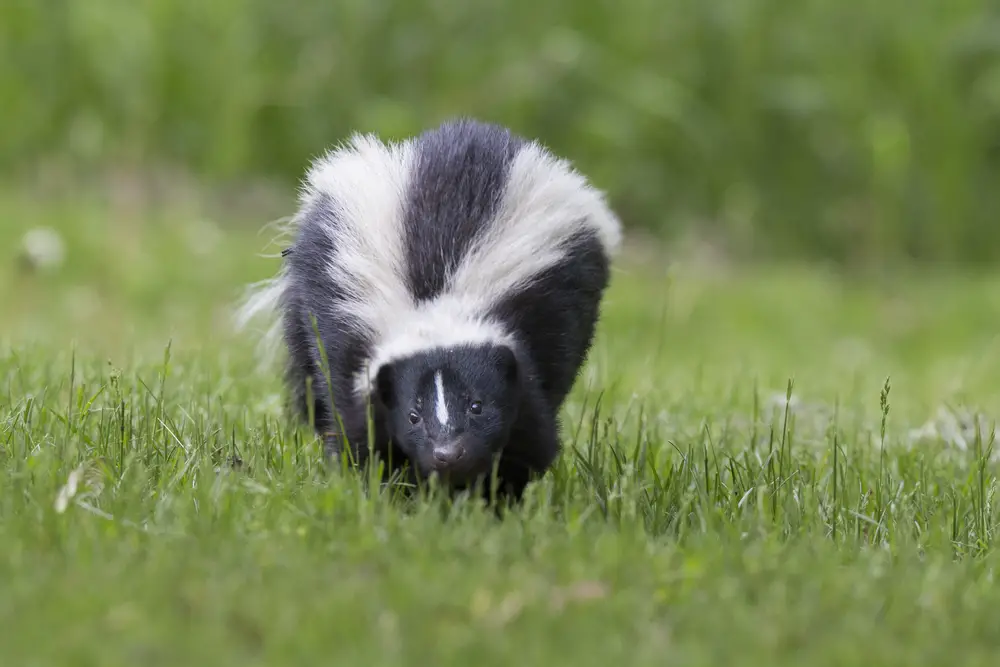Common types of skunks include striped skunks, hooded skunks, hog-nosed skunks, and spotted skunks. Skunks are recognized for their unique defensive capabilities, notably their ability to produce a strong odor.
But there’s a lot more to these creatures than meets the nose. From their omnivorous eating habits to their burrowing abilities, skunks are one of the most unique creatures to scour North America.
Here is everything you may want to know about this black-and-white mammal:
Table of Contents
7 Skunk Facts
Here are some quick facts about skunks:
- Skunks can live for up to 2-3 years in the wild. However, when in captivity, their lifespan shoots up to 10 years.
- Skunks are primarily found in the Americas; mainland Asia, Europe, and Africa are completely skunk-free!
- Skunks secrete their trademark scent from two glands located below their tails. This stinky secretion is used as a self-defense mechanism against predators, but it can only be used six times before they’re all out.
- A skunk’s odor can travel up to 1.5 miles away. It also takes 10 days for the smell to dissipate near the source completely.
- Skunks can eat rattlesnakes. These omnivorous creatures are immune to rattlesnake venom and will often kill and eat the entire snake—venom, fangs, and all.
- Skunks can’t see very well. Though, they more than make up for it with their impeccable sense of smell.
- All skunks are born striped, but not all of them are black and white! Some types of skunks are brown, cream, or gray.
Now that we’ve got the basics down let’s take a more in-depth look at skunks.
The Most Common Types of Skunks
Skunks are found worldwide, with 12 distinct species distributed across North and South America and islands in Asia. The following skunk species are the ones you’ll most likely encounter in the wild or near your property:
Striped skunk
Striped skunks are also known as Mephitis mephitis. This skunk frequents rural and suburban areas.
Hooded skunk
Hooded Skunks are commonly mistaken as striped skunks. A hooded skunk is differentiated by its softer fur and longer tails.
Hog-nosed skunk
Hog-nosed skunks have a single broad white stripe. They are commonly found in sparse, dry regions in North America and Mexico.
These include:
- Molina’s hog-nosed skunk
- Striped hog-nosed skunk
- American hog-nosed skunk
- Humboldt’s hog-nosed skunk
Spotted skunk
Spotted skuns are excellent climbers. They are smaller in stature compared to other skunks.
These include:
- Pygmy spotted skunk (Spilogale pygmaea)
- Southern spotted skunk (Spilogale angustifrons)
- Eastern spotted skunk (Spilogale putorius)
- Western spotted skunk (Spilogale gracilis)
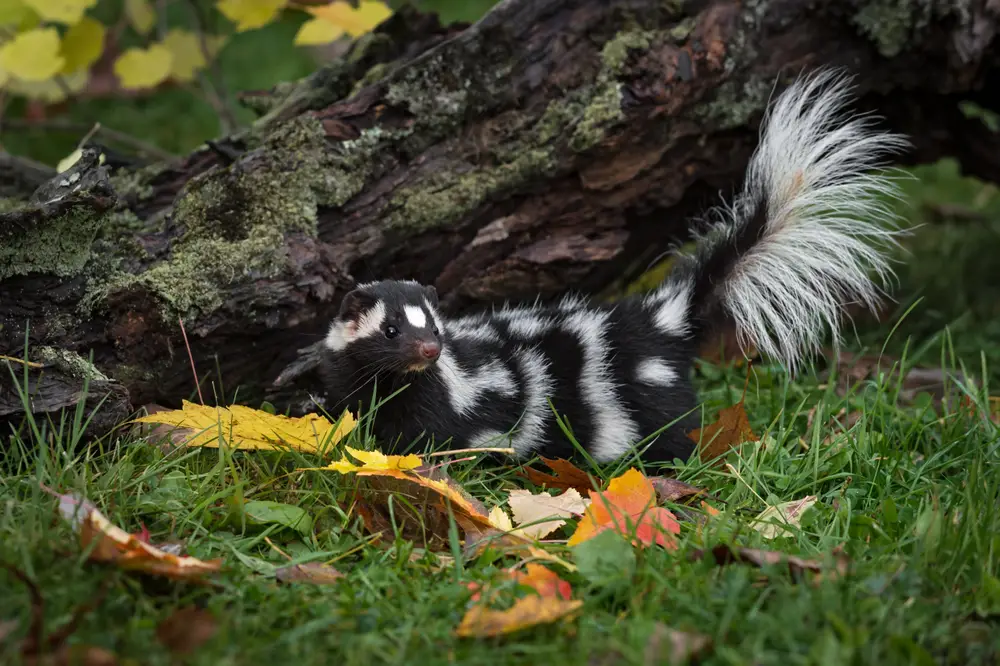
Where Do Skunks Live?
Skunks can thrive in various biomes scattered around Canada, the United States, Central America, and parts of Mexico. As long as food is abundant, these mammals can inhabit almost any area. This includes forests, mountains, grasslands, and even near deserts.
They typically burrow underground to create their dens, which are usually no more than a few inches in diameter and four inches deep. Skunks may also take up residence in abandoned groundhog holes, basements, and wood piles.
Despite their docile nature, skunks have been known to live near humans in suburban and rural areas due to the rich food sources these places contain.
What Do Skunks Eat?
Skunks are opportunistic eaters. This typically means they’ll eat just about anything they can get their paws on.
Food they like to eat include:
- Vegetables
- Fruit
- Insects
- Grubs
- Rodents
- Small mammals
- Reptiles
- Pet food
- Leftover food
If your home or property provides an easy food source for skunks and easy access, it’s highly likely they will start snooping around.
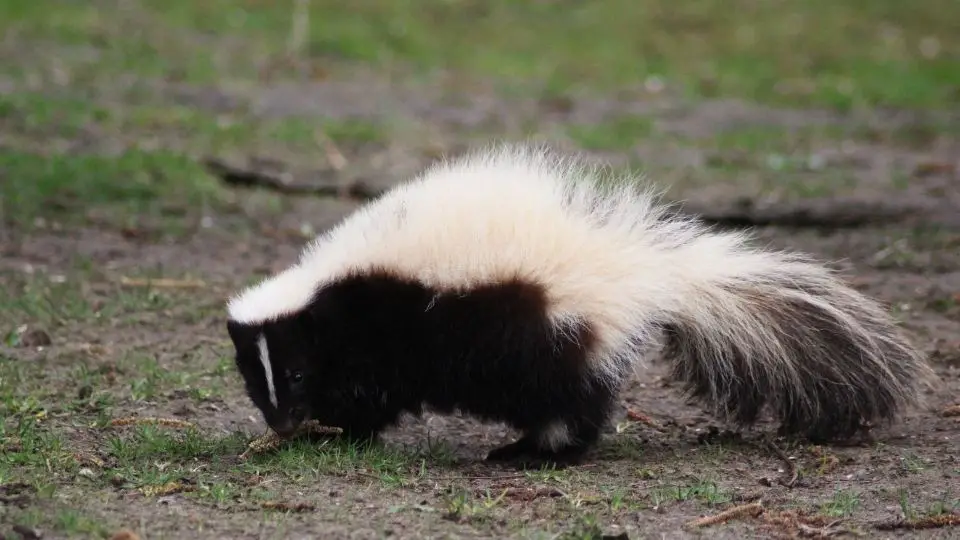
Do Skunks Hibernate in the Winter?
Skunks don’t enter a deep sleep as other animals do during the winter, but they will spend more time in their dens to shelter from the cold weather.
During this time, their metabolism will slow down, and they’ll consume less food. They often stay with other skunks in their dens to keep warm.
Every once in a while, a skunk may venture out of its den in search of food. But for the most part, they’ll remain hidden away until the weather warms up.
Are Skunks Nocturnal?
Yes, skunks are nocturnal animals. This means they’re most active at night, typically between the hours of dusk and dawn.
During their active hours, they hunt in search of food and mate. And during the day, they sleep in their dens or other safe areas.
There are, however, moments when you may see a skunk out of its den as they occasionally come out during the day. They may have been scared out by a predator, or they could be searching for food.
When Is Skunk’s Mating Season?
The mating season for skunks begins in the early spring, particularly between mid-January and March. Male skunks often find multiple mates during this time, while female skunks typically search for a new den where they can care for their offspring.
After mating, the female skunk will give birth to a litter of four to six baby skunks, known as kits. The kits will in fact stay with their mother for eight weeks, after which they’ll venture out on their own.
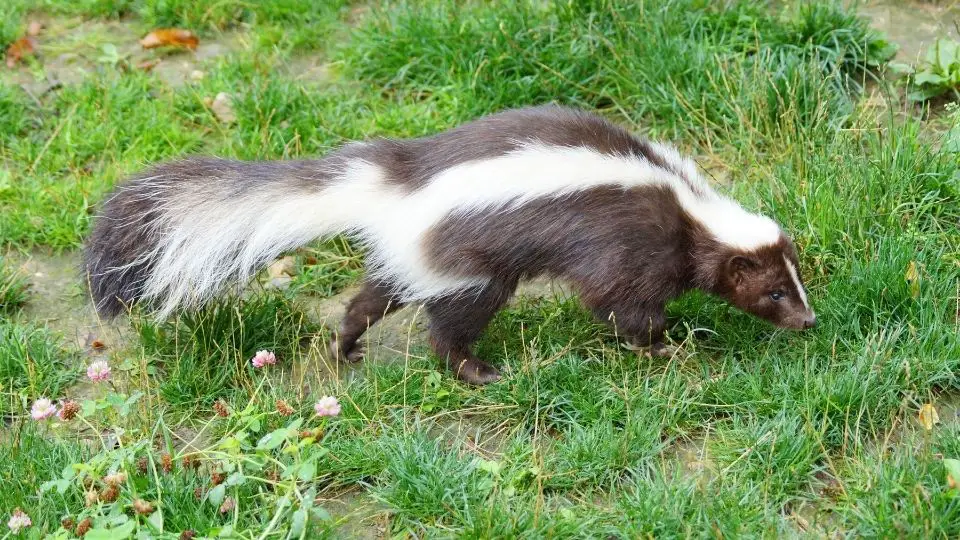
How to Recognize Baby Skunks?
Unlike adult skunks, baby skunks are more likely to venture out during the daytime. They’re also small in size, measuring less than 8 inches long. While they may be small, they’re able to produce the foul scent eight days after birth.
Other distinguishing features of a baby skunk include pink, softish skin, closed eyes, and a small head. Although they don’t have black and white fur at birth, they do have stripes due to being born with skin pigmentation.
Polecat vs Skunk
A common misconception is that polecats and skunks are the same creatures. But while they both possess black and white fur, they’re distinguished by their geographical habitat. Polecats typically reside in Europe, Asia, and Africa.
Skunks, on the other hand, only live in the Americas. Polecats are also more aggressive than skunks. They mark their territory with feces and a spray similar to a skunk, but not quite as potent.
Zorilla vs Skunk
The zorilla is also know as a striped polecat or African polecat. Like the skunk, it has a black-and-white coat and a horrible stench. However, they differ in several respects.
Part of the weasel family, zorillas are exclusively carnivores that feast on rodents, reptiles, and insects. They’re also only found in Africa, where no skunk currently resides.
Can You Eat a Skunk?
Yes, skunks can be eaten! Skunk meat is not as meaty as rabbits, but the flavor is not as repulsive as their odor.
One popular way people cook skunks is by roasting them. They don’t taste like traditional game due to their unique diet, but the meat is edible if skinned and prepared correctly.
Check out this video for instructions on preparing and cooking wild skunks.
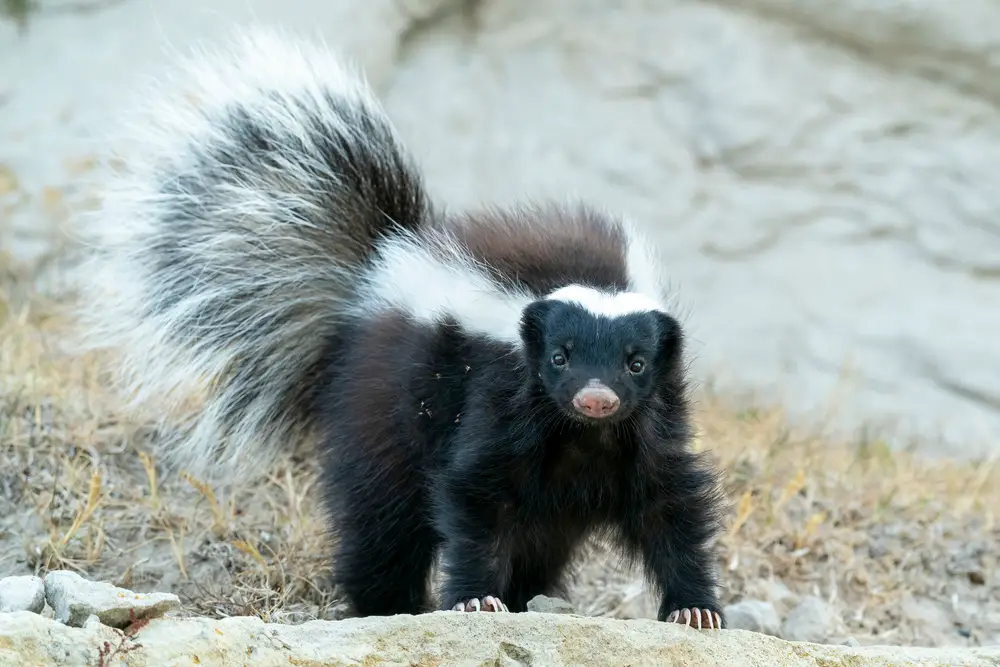
The Predators That Eat Skunks
While their defense mechanism can send even the most ferocious predators running, there are a few animals that will take on a skunk.
If you’ve ever wondered what eats skunks, here’s a list of some of its most common predators:
- Eagles
- Red-billed hawks
- Dogs
- Bobcats
- Mountain lions
- Great-horned owl
The reason why most animals steer clear of skunks is because of their musk. Skunks can release their stench up to three meters away, and it can take weeks for the smell to dissipate.
However, some animals can still eat most species of skunks because of one of two reasons: they’re able to incapacitate the skunk quickly, or they’re immune to their signature fumes.

